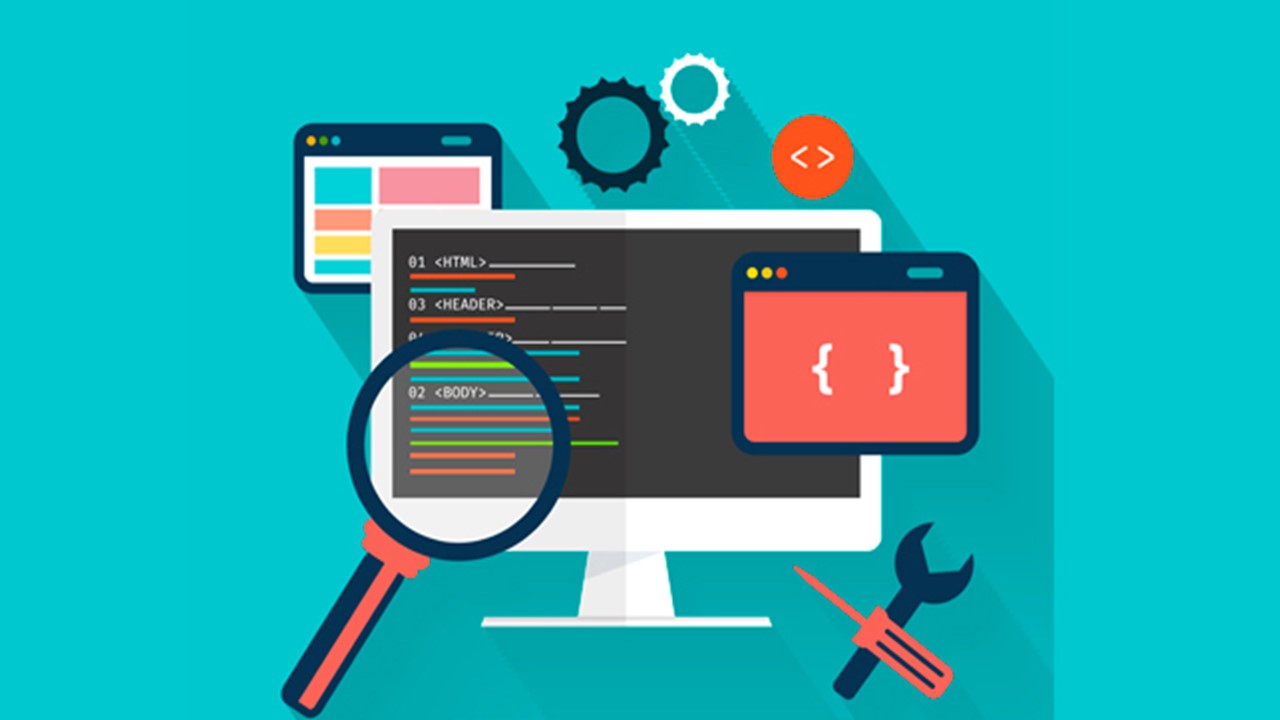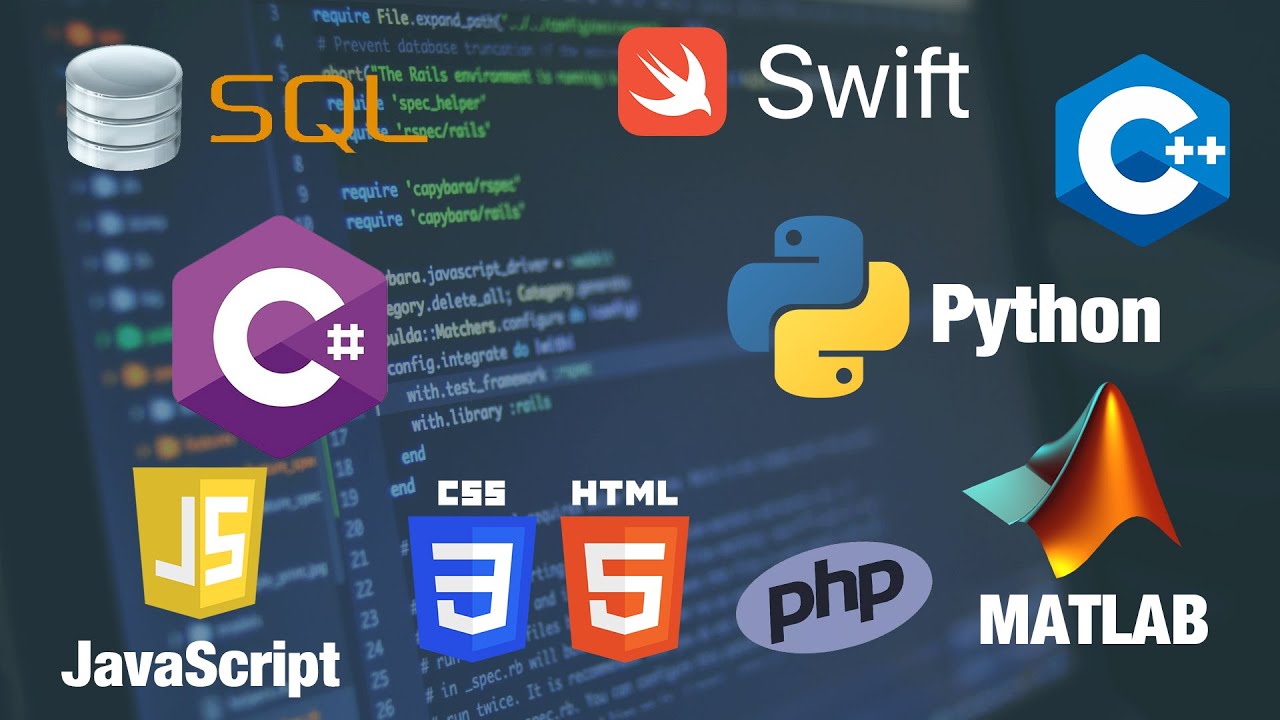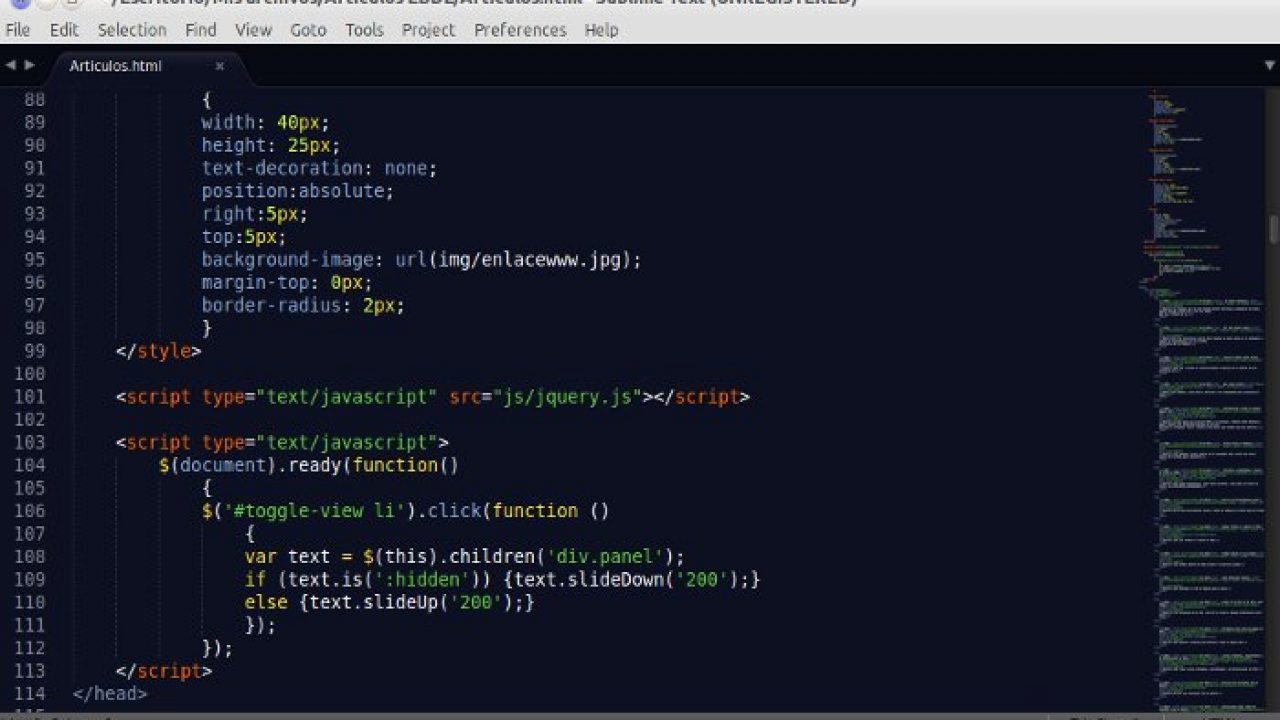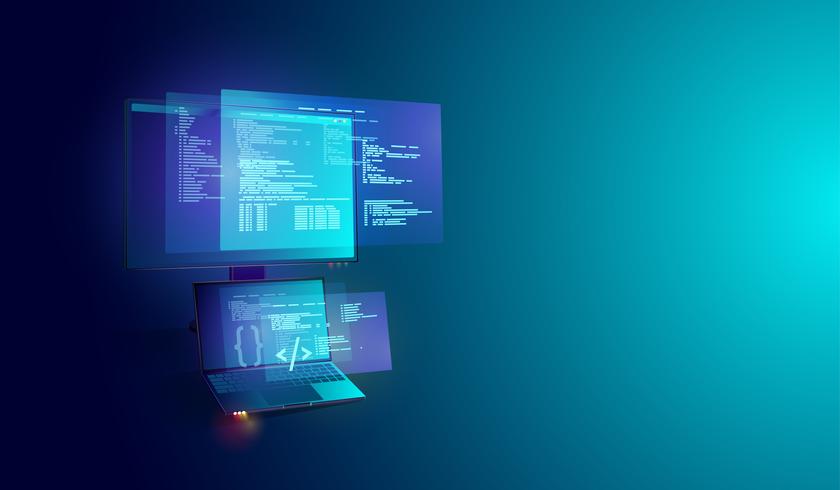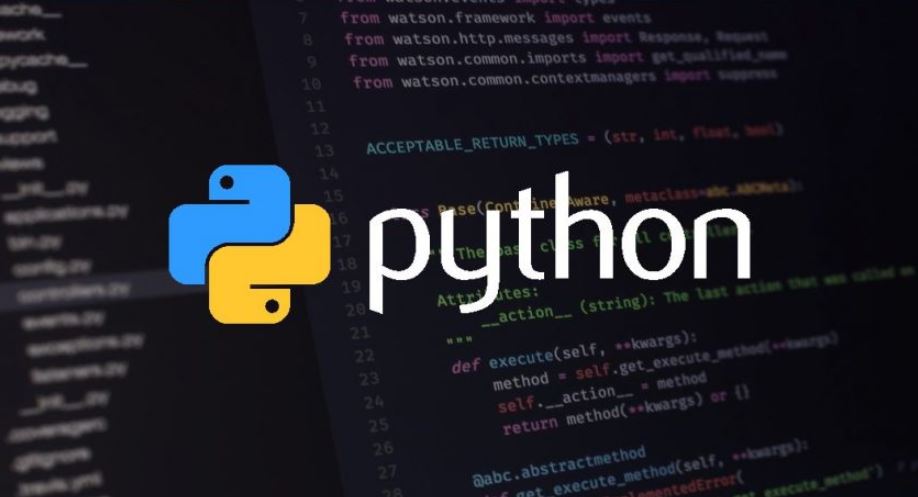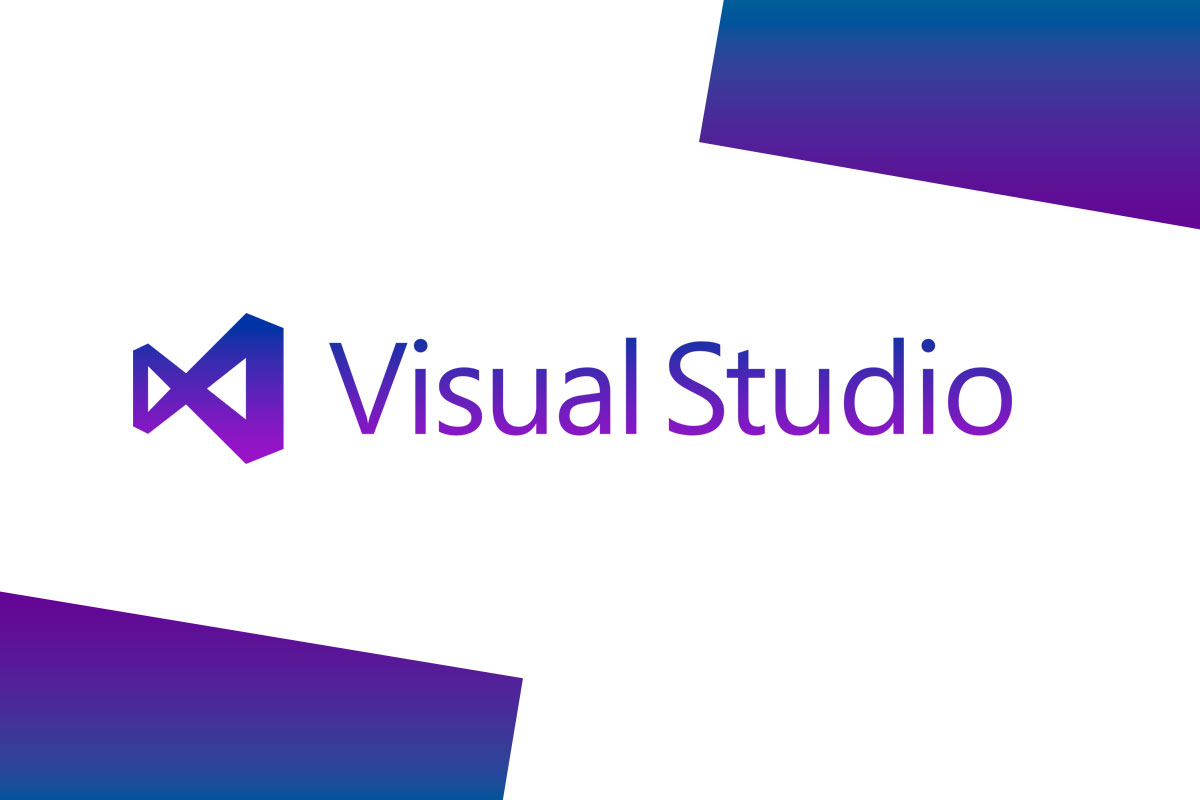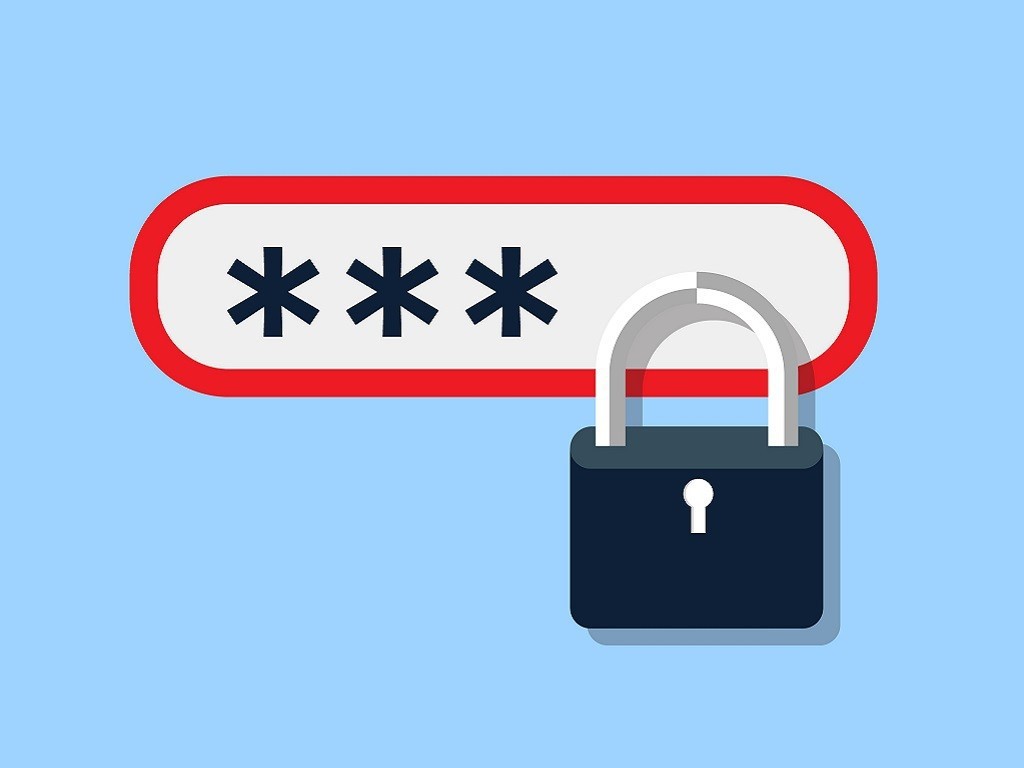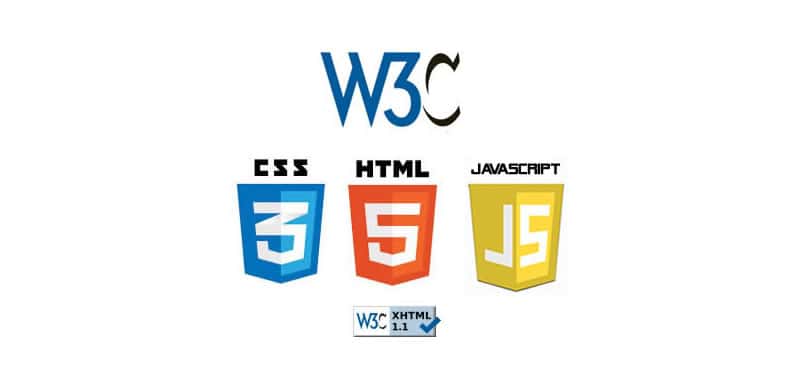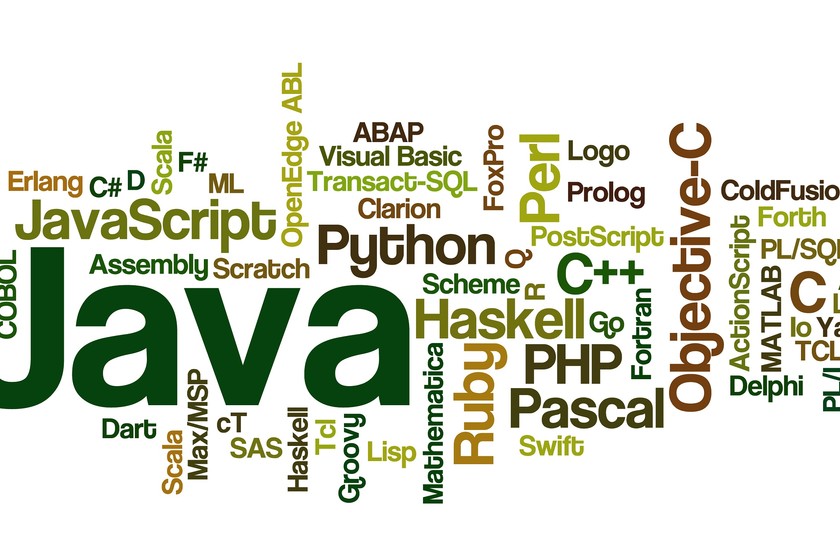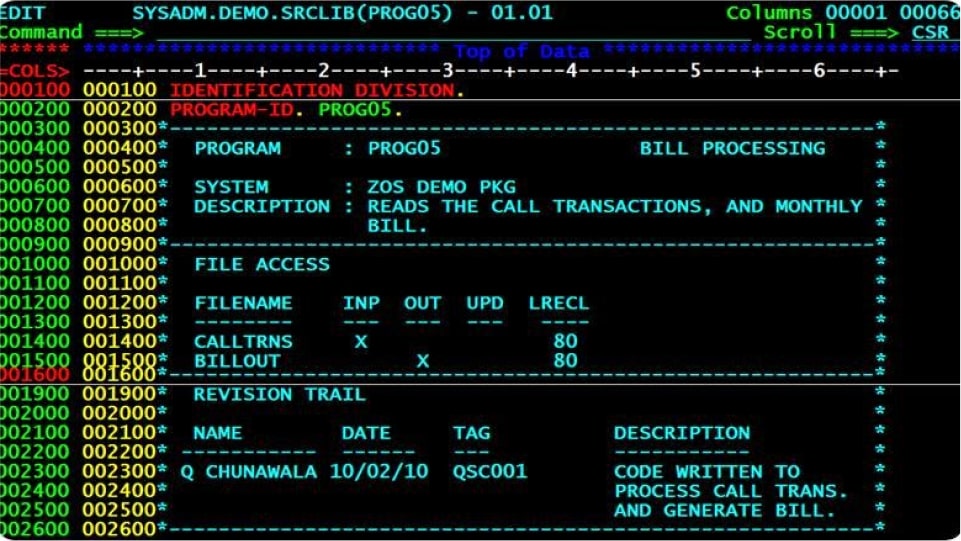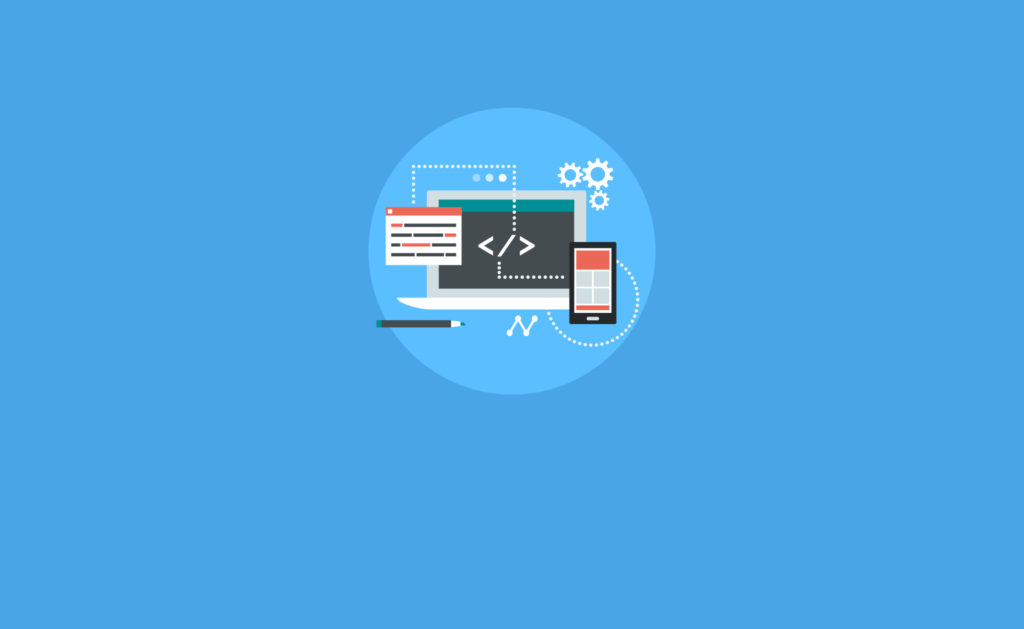Learn throughout this article How to create a program for pc step by step? All the details here! Currently it is good to know a little about programming, so it is not a bad idea to know the procedure in an easy and very practical way through this article.
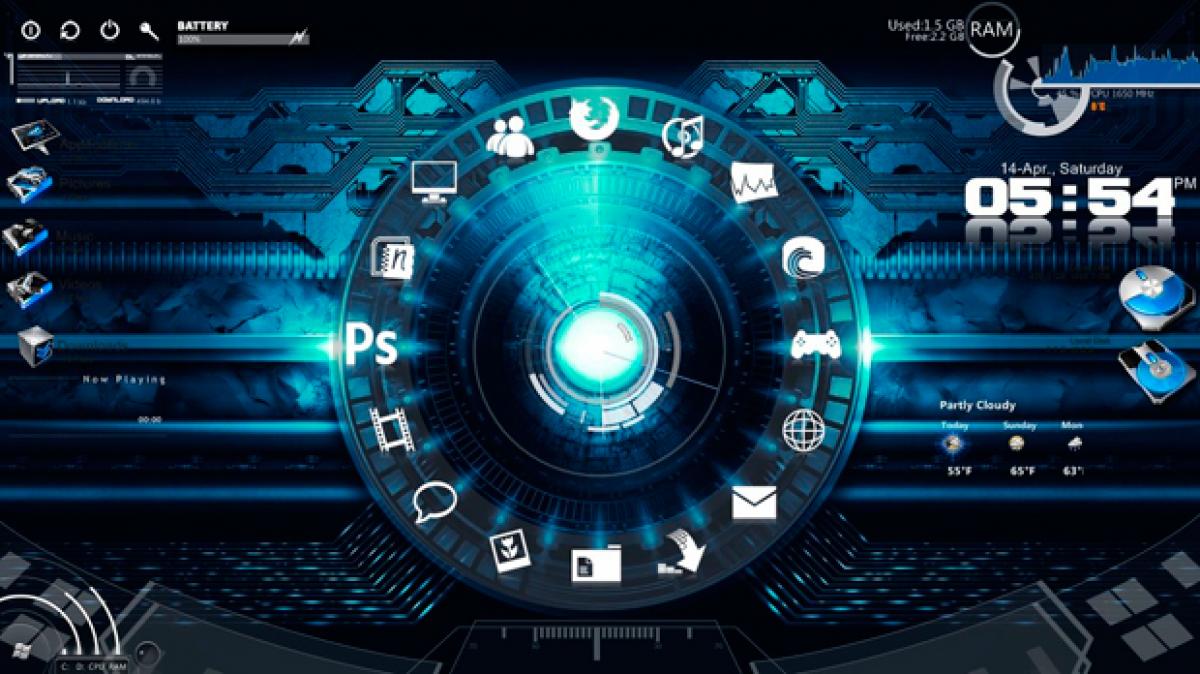
How to create a PC program?
First of all we must understand that it is programming and this refers to a process that uses an algorithm and encodes it in a representation, a programming language so that it can be executed by a computer. First of all is to need a solution. Without algorithms there would be no programs.
Programming science is not programming research. Despite this, programming is an important part of the work carried out by computer scientists. Programming is often how we create representations for solutions. Therefore this expression of language and its creation process become the basic components of the discipline.
The algorithm explains the solution to the problem based on the data needed to represent the problem. Programming languages must provide a way to represent processes and data. For this purpose, the language provides control structures and data types.
The control structure allows the steps of the algorithm to be expressed in a convenient but unambiguous way. At a minimum, the algorithm needs to perform sequential processing, create interactive structures for decision selection, and repetitive control. As long as the language provides these basic instructions, it can be used to represent algorithms.
We move on to creating a program. We must first consider the degree of globalization of the programs so that we can realize that they are no longer limited to PCs, and we can observe them on more different devices.
The level of mastery of these programs is very high, and they are used in almost all electronic devices today, from mobile phones to modern automobiles. There is no doubt that our world is undergoing tremendous changes that have almost changed our lives. The need to create new programs is a more obvious feature.
Why don't you learn how to create your own program? If you are interested in this, don't worry, because below you can find a short introduction to the field of programming, which is ideal for programs that make one of your ideas possible.
Ask yourself what your program will be
Without a doubt, before you start developing your own program, one of the most important things is to have a clear understanding of what we want. The main idea of the program is to carry out an activity to promote the efforts of the users, therefore, we can use our program as a starting point, what tasks to complete and what is the most effective method.
With this in mind, we can measure the success of our program based on its usefulness to the users who use it. When planning the procedures, we can see:
- Make sure to check the tasks that people usually perform manually on the computer every day. In this way, you can tailor the program to existing needs and try to find a way to optimize the process, so that the user does not have to work hard.
- Don't waste any ideas you think of, try to write down all the ideas you think of. At first you may think of something outrageous or even strange, but this idea can make you create something that is really useful and innovative. It may interest you:Object-oriented programming
Jot down ideas from other programs already designed
We are not referring to theft at all, but it is a perfect option to find out that your program is missing or you even think that there is a better way to accomplish this task. If you think about the problems that other people have designed when you think of a program, you can find a starting point that focuses on the program.
You can also design a program similar to another program on the net, as long as it has its own characteristics and is completely designed by you, then there will be no problem with copyright, as this can only be used for reference.
Create a design document
Although this may seem simple, the fact is that it does much more than that. When thinking about how to write a program write down all your ideas, this will help you focus on the main idea.
In addition to being established to meet the main objectives of the plan, you can also use it to explain all the characteristics and objectives of the plan in the project. Usually this seems a bit complicated, but there are many tutorials on the internet on how to create design documents, so you just need to take a look to start developing documents.
Start with something simple
One mistake most people who want to get started in the programming field make is to design something that is too complicated, just so they know. If you already have some experience and have created programs before, it shouldn't be a problem to design a slightly more complicated program. But many first-time coders don't yet have the skills to create things that are too complicated.
If your case is someone who has just started programming but is not fully computer literate, then the best way is to consider creating a design that is as simple as possible so that you can gain experience and a little practice in the process. When you start out simple, this also provides the ability to expand your creation over time, so it's beneficial anyway.
Learn a programming language
If you are designing a program for the first time, one of the hardest parts you will have to deal with is learning a programming language. The fact is that there are many languages in the world of programming, so the best option is to learn only one language at the beginning.
Although programs can be designed with the help of other programs, they provide us with programming languages, but learning certain languages directly can make it easier for us to design other programs in the future.
Text editor
One very important thing to remember is that there must be a good text editor, because in fact, all programs to be designed must first be written in a text editor and then "compiled" so that one computer or another can The device that runs it. .
If you don't have the ability to download any program to edit the text, don't worry, because by default our computer uses Notepad or TexEdit. However, it is generally recommended that you download other text editors, which should have the following functions: Notepad ++, JEdit, or Sublime Text.
One of the reasons for all this is to make the code created visually easier to analyze and thus create programs. An advantage of some programming languages (such as Visual Basic) is that they have their own text editor and compiler, all in one download package.
Code programs
It should be clear that each program is designed by aligned code systems, which can be more complex or simpler. This means that if we want to create our own programs, we must have a basic understanding of these codes. These codes are grouped by the name of the programming language, and there are many. The most common we can highlight:
C: The first is a very simple and easy to understand language, which interacts closely with the physical part (hardware) of our computer. Although it is one of the oldest, it is still one of the most used in the world today.
C ++: if its main feature is that it can be object-oriented, it was not possible in its previous version "C". Currently, the most widely used language is undoubtedly C ++, and almost all the leading software on the market is made in this language. A perfect example is the browser "Chrome" and the photo editing program "Photoshop".
Java: You have probably heard of Java, which is an advanced version of C ++, and is known for its powerful versatility when designing programs. Almost all computers are compatible with Java, and regardless of the operating system, Java can be used without problems. The fact is, Java is primarily used in video games and business software, but your ability to use it is not limited to specific areas.
C #: This is a special language because it focuses on devices with a "Windows" system, but if you consider most of the people who use this operating system, they have no problem with expansion. It can be said that this is a combination of Java and C ++ language, so if you master the above language, it will be easy to learn. It is generally used when creating programs intended primarily for "Windows" products, and I find this operating system very useful.
Objective-C: "Apple" is like the Windows programming language used to create products, and a language is designed for your company's devices. If your task is to design programs for iPhone, iPad, and even Mac computers, then this language is for you.
Compiler
A compiler or an interpreter allows the team to understand our programming language, so having a language is important if we plan to create our own programs. What you need to remember is that more complex languages (like C ++, Java, or most newer languages) will necessarily require a compiler. Compilation is done by converting the code we write into a format that the computer can recognize and execute.
Although this sounds simple, the fact is that there are currently a large number of compilers, so we must consider many variables when choosing one. In general, it is recommended to obtain a compiler that can effectively recognize the language depending on the type of language we use, but we must also consider the capabilities of our equipment and its compatibility with other devices.
Still, most computers can use some languages to interpret these languages without a compiler. This happened because they installed an interpreter that uses the language, the main examples are Perl and Python.
Learn the basics of programming
No matter what kind of language you choose, in the end you need to understand some programming basics as these are essential when applying the language. Being able to understand the grammar of the language you use gives you the opportunity to design more powerful programs. Therefore, we have created a small list with some of the most common concepts in the programming area:
- Declare variables: We can define variables as temporarily managed data in the program. It has the ability to be saved, modified and operated by our program at any time, and is generally used for various purposes.
- Conditional declarations: Which can be mentioned "if, otherwise, when", these declarations perform the basic tasks of the program in a predefined way. They usually work with logic and always use "true or false" statements to perform actions to determine if something is right or wrong.
- Loops: Loops are files that allow you to repeat the activities performed by the program several times. They will continue repeating the process until the command to stop the cycle is issued.
Ask other people
In the early days, you need to visit experienced people and ask questions directly. Fortunately, today the Internet has become an incredible information distribution tool, so you can reach out to others to help you keep going.
We must understand that there are many mishaps and pauses when developing programs, especially if this is the first one you want to create. For these reasons, it is recommended that you seek help when it is difficult to overcome.
Develop your prototype
Once you have discovered what type of program you want to create, you have the knowledge you need to develop and clarify your questions. The next job is to start the real part and design the prototype of the program. Essentially, the prototype should contain all the functions that will be included in the program, but if you are not ready or too complicated for you, you can start with the main functions that the program is based on.
The prototype will be created using a specific programming language, it will have multiple basic programming concepts and will be carried out by a specific device. Despite the great progress we must bear in mind that prototypes generally produce many errors, and the main function is to show us prototypes and solve them.
Start with your main function
You should always focus on trying to meet the ideas and needs of your program, so the prototype you design should focus on the ability to accomplish this activity. Ideally, you should start writing the necessary program to effectively implement this function, and then you can add more functions to the program.
Usually at this stage, the details that are considered minor are generally ignored, because our task is to make the main activities proceed normally. Although this seems to slow down our work, the fact is that it greatly simplifies the prototyping process, because if certain changes have to be made to the code due to bugs, the simpler it is, the easier it will be to modify it.
Use support from others
The fact is that when you are developing a program on your own the work will be very complicated and even if it is simple there will be more than one opportunity and you will need someone to help you. Also, when you are in the prototyping stage, this will be the ideal time to build a team as you can more effectively detect potential bugs in the program together.
You also need to remember that letting more people think about new scheduling features can help you get some ideas that may not occur when you work on your own.
It should be noted that when developing a program, it is not necessary to have a work team, especially when a very small project is being developed and too much effort is not needed. However, if we are assisted by others, the time required to complete the procedure will be greatly reduced.
Don't be afraid to start from scratch
When prototyping, you may notice that your program is not what you want. If the result is different from what you want to get, do it again without hesitation when necessary.
Because our program is still in its early prototype stages and you should already have a clear idea of what we want to achieve, you don't have to worry about scrapping the current prototype and starting from scratch. Assuming this point is reached, we have a basic understanding of the language and concepts used, so it shouldn't take more than 3-4 days to create a new prototype.
It should be noted that this is the best time to change the program, because it is more difficult to change the important features at the end of the program.
Make sure to document everything
A very simple method is to use the comment syntax in the programming language so that you can leave comments on the lines of code that you have written. This is done remembering that the program needs to focus on the function and allows you to temporarily abandon the project, when you return you can read these instructions to remember what you are doing and then leave.
Similarly, for other developers, this is also a benefit, as they can more easily understand the code you are designing, which will be very useful if you work in a team as we mentioned earlier.
Another special use you can provide for these comments is to temporarily "disable" certain parts of the code, allowing you to check specific areas of the program. Then to restore these disabled parts again, all you have to do is remove these comments from the code.
Alpha tests
Once the working prototype is complete the next thing to do is test it to understand its development during normal operation and try to make sure everything works. At this point our prototype is complete, most of the things that can be done should be small, and it looks more like a test activity than a design.
These types of tests are usually shown to the public after passing them. Unlike beta testing, the person testing the program must be carefully selected.
Get a test kit
To perform an alpha test, it is necessary to introduce the program to others, who will use it as normal consumers usually use it. It is recommended that this team is very small, and it is better to be composed of people with good experience in the program so that they can notice errors or defects in the program.
Another advantage of testing with a small group of people is that in addition to the ability to interact with each test subject individually you will also focus on the information obtained. Also note that every time you make a change and create a new version of the program, you should send that version to the test team members, because these people will compare the resulting changes and give opinions on whether the changes are positive or negative.
It should be noted that the most effective way to find errors during alpha testing is to allow members to literally try to interrupt the program during daily use while recording the error.
Perform multiple alpha tests in succession
If you did not find an error in the program during the first test, or you do not trust yourself, it is best to run several tests in a row and try to force the error to appear. Treat mistakes as any developer's fault, so if there is a chance to avoid mistakes, it is best to make all possible predictions.
You can try creating errors in your code, which is a good starting point. Also try using the program unexpectedly, and you will never know what caused the failure. You can focus this way: "Try to destroy the program in every way possible and then prevent this damage from happening again."
Some ways to try to damage your program are:
- As far as your program is concerned it is primarily driven by numerical factors such as dates or calculations, try to perform operations that are too large for it. When we talk about dates, you may try to find a date that is out of date or too long, which can lead to some strange reactions that need to be corrected.
- On the other hand if your program counts numbers like a calculator it will try to enter too high a value or it will try to order the factors incorrectly (eg it will collect multiple numbers with no numbers + -x% symbol).
- Another very simple way to clear errors in the program is to enter the wrong variables and data. If our program is designed to understand words, you can try typing a number and see what your reaction is.
- If you already have a stable user interface, you can try clicking anywhere. Although this may seem silly, the fact is that our program cannot respond to so many requests so quickly.
Fix and repair major errors
What surprised and welcomed those who created the first program was the large number of bugs discovered during beta testing. Therefore in this process we must spend a lot of time correcting each error found, which is normal. The usual hint for beginners is to organize your mistakes first and try to correct them based on their priority and severity.
Usually, errors related to the main function of our program are usually resolved first. Although those related to code are also considered the most important, we did not realize that they can affect various parts of our program.
Add characteristics
Do you remember the design document we created earlier? All the possible features, goals, and functions of the program have been outlined here, and now is the time to implement them. This stage should have made our main tasks fully operational, so that we can work on improving other parts of the program and checking if they are working properly.
You shouldn't be afraid to add features, but it's a good idea not to stray too far from the original design you had in mind. The truth is that one of the problems that are widely seen today in various programs created by people or companies without much experience is the deviation of their focus. The point is, by adding so many new features, our program splits its development time into too many different features.
Launch your program
One of the most anticipated moments for program developers is the moment when the program is introduced to everyone else. Although this stage seems the simplest, the fact is that it is just as complex as all the previous stages. It should be noted that thousands of shows are shown to the public every day, so it is not easy to make our shows stand out.
Advertise your program
In most cases, we want our program to be understood by people and have a large number of users, so it is necessary that as many people as possible understand the existence of our program. As with any other product or service available on the market, these programs also require a bit of advertising so that people get to know them quickly.
However, our advertising will continue to be restricted or enhanced by many factors, such as the scope and depth of our plan. This will also greatly affect our existing resources, because these resources will allow us to execute larger advertising strategies and obtain more effective and expensive tools.
Establish a technical support service
When your program is open to the public, you will undoubtedly encounter technical problems or users who do not understand how the program works. Detailed documentation about the program and some of its support services should be available on its website. This can include technical support forums, support emails, real-time help, or a combination of the above options. The options you provide will depend on your available resources.
Constantly update your product
Currently almost all programs have fixes and updates released long after the initial version. These fixes can correct serious or minor bugs, update security protocols, improve stability, add functions, and even redo the aesthetics of the program. Keeping the program current will help keep the program competitive.
Programs to schedule
Today people who want to create programs have more tools, such as those designed for programming. This advance is a novel option, which brings advantages and disadvantages in use, but there is no doubt that they are easier to use, since you only need to know their execution procedures.
Fortunately, for most of today's developers, there are many of these programs, so our only task is to find the best program so that we can create our own program. The most famous that we can mention are:
Microsoft Visual Studio .NET
There is no doubt that one of the most complete tools is Microsoft Visual Studio .NET, which has many functions when designing programs. Despite its extremely comprehensive functionality, it was developed to create applications directly for your own operating system. If we were to design a program that could be distributed across multiple operating systems and devices, this would be a problem.
The tool is very complete, in addition to allowing you to even use your own language it can also provide us with most of the programming languages (they are available: C ++, Visual C # and Visual J #). At the same time, we provide support, so we will provide support using any available language.
The possibilities allowed by Microsoft Visual Studio .NET are almost limitless, because we can design any project that we consider. Their applications are not limited to desktop programs, because we can even develop web services, games, commercial software, and just about anything else we can think of. In addition, we can emphasize that the program can be suitable for all versions of Windows, and even make it work on other devices designed by the company.
Java SDK
First, "Java" was born in a programming language, its main function is to ensure that as long as you have a Java virtual machine, the design and development of the program can run on almost any operating system. With this in mind, Java stands out primarily in terms of the compatibility it provides, and recently designed a program to promote the creation of content in its language.
The main focus of the program is that it has little dependency on other software to run programs designed using the program, which is very useful for developers because they only need to create program code without a compiler. Ability to make it executable on another device.
Development software examples
The software is all the logical parts that a computer system can have, corresponding to the hardware. The software exists in almost every device today, like computers, our phones, modern cars, microwave ovens, or just about any device with an electronic system. Similarly, the software is presented as a set of programs and is responsible for performing specific functions.
When it comes to its development on the device, the software is responsible for creating internal information, editing and saving data, and using various commands to execute the commands that the user wants. Although the software seems simple, the fact is that it can be more complicated than the hardware, because errors in the program code can lead to more failures, making the use of the software dangerous for those who have difficulty managing it. Situation. Calculation.
Today there are many examples of software development, more or less successful. Among the excellent examples that are worth considering and we can mention:
- Apache Open Office
- Mac Os
- Photoshop
- Google Docs processor
- Skype or Whatsapp
- OpenOffice Writer
How to create a software?
From the beginning we have focused on the importance of creating software in different ways and the requirements necessary to design the software correctly. Therefore, we will explain at the end a different method from the previous method of software development using the cloud as a tool.
It should be noted that the fact that such software was created in the cloud was the main reason, and the software was later used on the network and compiled automatically. However, you must bear in mind that to access this software, you must also have an Internet connection, since all the programs used for its operation are hosted on the Internet.
We are going to see step by step how to design a software, this time we will use the velneo platform.
Step 1:
First open Visual C # in version 2010 "Express Edition". This particular version is used because it has multiple tools that are easy to use. Then use the links on the Velmeo home page to create a new project, or use the File menu to design a new project.
Step 2:
After loading the project dialog, you will need to select the device category for which you want to target the application. In this case, we will select "Windows Forms Application", which translates to "Windows Forms Application". After that, enter the name of the software to be developed, and then select the "OK" option to start the design.
From this point on, you will start to use the regular "Visual Studio" space, where you will see the toolbox on the left, which will help you in the development section. On the other hand, the center of the screen is in the form of software, while on the right is the general structure of the project, where you can modify some of its properties.
Step 3:
Use the toolbox and drag the labels and buttons onto your form. At this point, it is recommended that you go through the complete examples to some extent, mimic a more effective window layout for other completed projects.
Step 4:
After that, double-click the button to access the coding part that our program will use. In this way, an "event" is created in our program, which will be triggered when the user double-clicks the button.
In the coding section, you can insert different commands to perform different operations, but in this case, we will do something simple. You can write this code in the button's code screen, which allows all code to run when the event is fired:
private void button1_Clic (object send, EventArgs e) {}
Step 5:
Finally, the creation of the software is completed by pressing the command Ctrl + Shift + B. This specific command has the function of converting the entire project that you previously developed into code that any computer can understand. After developing this software, you can press "F5" on the same page to see how the software works on your own computer.
Where are Programming Languages going?
In recent years many things have changed. However, progress in this field of programming languages is more evolutionary than revolutionary every day. There are very important trends that will set the tone for programming language design, and this is already a revolution.
Design of the most notorious languages
Functional programming
This type is a style of programming that is based on the utility of mathematical applications. It is the theoretical foundation of this style model. Examples of them are LIsp, Haskell, and Erlang.
Variables in functional languages are similar to algebraic variables. In other words this represents an initially unknown value, but once it is known it does not change. These are just names of storage locations, and their contents can be read and / or modified at will because variables were once assignable, functional programs have an attribute called referential transparency.
Dynamic languages
This is a high-level language that performs many of the actions that others typically perform at run-time compile time. These operations attach and evaluate codes, modify the data type system, add attributes to objects. One of the reasons why people use this language is the high value in productivity.
parallel programming
The large-scale commercialization of the first batch of multicore chips in 2005 led to the end of the free lunch. In the not-too-distant past, developers could write programs without worrying about their performance, because they know that in a relatively short period of time, new hardware can run their programs faster without modification (hence the name For Free Lunch).
Moore's Law states that the number of modifiable transistors on a single chip doubles roughly every 18 months. Typically this translates to a CPU running at a higher megahertz per year. However, due to heating and power consumption, this increase in clock speed is no longer sustainable.
This is not to say that Moore's Law is no longer true but what microprocessor manufacturers are doing now is using these extra transistors to add more cores to the CPU. The kernel is basically a processing unit, which includes registers, execution units, and cache.
Multi-paradigm languages
To date this language solution that supports multiple programming styles or paradigms is still very common. Ruby and Python are dynamic, object-oriented languages, but they also have elements that allow them to be used as functional languages. Erlang is a functional, concurrent and distributed language. The Oz language supports logic, functions, object-oriented, constraint-based, distributed, and concurrent programming.
Today's programming platforms tend to be more platform-centric than just using one language. In other words, now that we have programmers and / or web developers, monolingual programmers have come to an end. For example, web developers must be prepared to complete the job, including HTML, CSS, JavaScript. These are all for client-side programming, only the server-side may need to understand SQL, a framework for a specific programming language, and a template language to generate dynamic content.
There are phases of program creation, here we will indicate which are for the creation of one:
Program definition:
This stage is given by the statement of the problem that requires a clear and precise definition. It is important to know what the computer is doing. Although it is not completely clear, it does not make sense to move on to the next stage.
Problem analysis:
After understanding the needs of the computer, you need to define:
- Enter the details.
- What information do you want to generate (output)
Algorithm design:
These are:
- You must have a specific starting point.
- It must be defined, double interpretation is not allowed.
- It must be universal, that is, it must be compatible with most may appear in the problem, the size and the execution time.
- They must be limited.
Coding:
This is simply the execution of working out a solution to a problem. They are detailed indications which are called code sources. That is, they are language scripts.
Testing and debugging:
There are many human errors in computer programming, and it increases greatly with the complexity of the problem. The process of identifying and removing errors and converting them to an error-free solution is called debugging. The test involves capturing data until the program is free of errors, the most common being syntax and logic.
Documentation:
It is a written guide or communication in various forms, whether in the form of statements, procedures, graphs, or charts. Generally, a program written by one person will be used by someone else. Therefore, this document is used to help you understand or use the program or to facilitate future modifications (maintenance).
This is divided into three parts:
- Internal Documentation
- External Documentation
- User's manual
Maintenance:
When it is necessary to make changes to the program, adjust it or supplement it to continue normal operation, perform this operation after the program is completed. To carry out this work, the program must be correctly recorded.
Relevant facts from the history of programming languages
Although many people are not aware of this, today without a programming language we will not be able to understand the world. The truth is that almost everything around us is built with code. Mobile applications, social networks, video games, computer programs and even the elements that are used to write this program were created using programming languages.
The first language or programming language was born in 1801 This French inventor is responsible for programming. He was not the inventor because a lot has changed since then, but it is clear that he created the first set of instructions for the computer.
In other words, your programmable card is inserted into the loom and the card can read the card code and the automated process and explain. It's obviously all about creating different designs on the fabric, but this allows anyone with a loom and punch card to create the design without having to be an expert in the field.
People think that this is the first programming language because these punch cards were first used in computers created by Charles Babbage and later in the first computers.
One of the first programming languages was that of Ada lovelace between the years of 1842 and 1843, she offered to make a translation of the memories of a character named Luigi Menabrea, while doing this, she created a manual programming language to calculate a series of numbers Bernoulli using Babbage's machine.
Many years later with the arrival of new programming languages, Turing completely changed the way of calculating through his Turing machine. This machine shows that they can solve any mathematical problem through an algorithm. If there is an algorithm the machine can solve the problem.
In the 1970s, Mr. John W Backus invented the first high-standard programming language and these were used by real programmers, this became a way out, since it reduces the workload when calculating the missile trajectory, as they finish the job faster.
The cobol
It arrives in the years 1959 as the completion of several other programming systems. And this is intended to make a unique language that can be used on computers. In the 60s there were different computers that were not reconcilable with each other, so in a certain way companies could recruit staff without making use of compilers and their different languages that they used.
The Basic
It was born in 1964. This is a set of programming languages also of high standards that was applied as a teaching tool, and it was so boom that it began to be coupled in other systems and today it is very important and these still are still being used.
Pascal
This is a programming teaching tool, but it quickly became a programming language for creating various applications. In fact, although it is still used today, it is less present in the application, but it can be seen in conjunction with the Free Pascal compiler in programming school.
HTML, Python and Visual Basic
After many years of "patching" with object-oriented compilers and programming languages, the age of the Internet has arrived. Here, the programming language has made great progress, although "no new inventions have been invented", old ideas have matured.
Java, JavaScript and PHP
Basically, they exist on 50% of web pages and in many applications. Although attempts have been made to abandon the use of new languages, Java and JavaScript are still very important. With the advent of the 2000s, new programming languages like Action Script appeared. However, this came in 2001 with C # and Visual Basic .NET. Along with the previous years of Java and HTML, C # reached the best moment in the history of programming languages.
Scratch
We continue to talk about the history of programming languages and about Scratch, the "revolution" of programming languages. It is a visual programming language developed by the Massachusetts Institute of Technology and consists of a developed language that allows children, adolescents and adults to learn visual programming without too much knowledge of the code.
Go by Google
Go, also known as Goland, is a programming language designed by Google, nothing more. It was inspired by C, but it is a much more complicated language. It focuses on a very specific process, but the main goal is security. Therefore, Go does not have a pointer algorithm. As a member of Google, after it becomes popular, you will surely have a big gap in Android development.
kotlin 2012
Kotlin is one of the popular programming languages, not because it is the simplest, but because Google marks it as the best programming language for Android. A few weeks ago at Google I / O, Mountain View extended a helping hand to Kotlin developer JetBrains and claimed that Android will become more and more Kotlin, thus providing more for developers using this language. Much convenience. .
Origins and curiosities of names and web development languages
We explain some of the peculiarities of the names of programming languages and web development languages that can be found in its history.
PHP
PHP has the recursive acronym in English for PHP: Hypertext Preprocessor. Therefore, its abbreviation PHP determines the widespread use of web development languages.
Python
Another well-known development language, the principle is to make the code readable. In fact, its name comes from its creator, Guido van Rossum, who is very fond of the famous comedian Monty Python.
C++
The language he uses is "C" as short for "elegance." C ++ stands for Incremental C, which is exactly one way to increase the value of variables in the language itself. That is, if we assign a value of 1 to a variable (such as "i") and use i ++, we will change the value of the variable to 2.
Fun Fact
Ada Lovelace the world's first programmer. Ada is generally considered the world's first computer programmer. In 1833, he met the talented British mathematician Charles Babbage (Charles Babbage), and became a lifelong friend with him. Ada has upheld the idea of an "analysis machine," a mechanical calculator invented by her great friend Charles, whose design predicts today's computer for more than 100 years.
For a long time, they called her the "digital witch" - her good friend Charles Babbage gave her a cute nickname, and it undoubtedly won her efforts. Ada sees herself as "metaphysical" and sometimes calls her thinking "poetic" because she likes to describe mathematics with brilliant metaphors and especially with imagination.
Ada was one of the first to speculate on artificial intelligence. Although he recognized the enormous potential of computing, he was openly pessimistic about AI, and his sentence emphasized the following: The analyzer has no right to cause consequences. It can do anything we can order. You can perform analysis, but you cannot predict any type of relationship or analyze facts today, this topic is still a hot topic.
Your notes indicate that you have predicted the possibility that a computer can generate music. Before falling ill, he wrote a letter to his mother telling her that he was working on certain plays to explore the relationship between music and mathematics. Even then, he still knew that the analysis machine could one day be used to write complex and delicate melodies.
If you want to continue reading our fabulous articles visit the following link:Object-oriented programming

